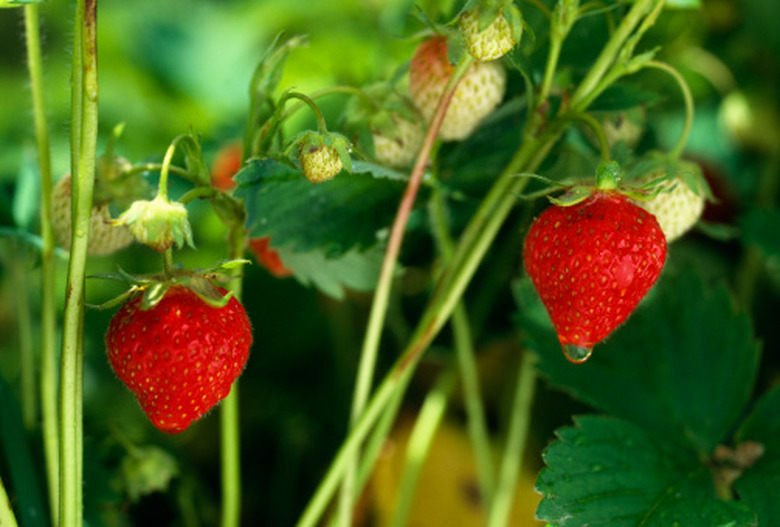How To Tell If You Have June-Bearing Strawberry Plants Or Everbearing Strawberry Plants
As you contemplate a strawberry patch in your landscape, you have the choice of strawberry varieties to suit your growing location and harvest desires. June-bearing strawberry plants and everbearing strawberry plants have different growing characteristics and habits. Both strawberry varieties are easy to identify when you know how they grow and when they produce berries. With a simple assessment, you can tell the difference between June-bearing and everbearing strawberries.
Step 1
Notice the number of times per year the strawberries develop and ripen. June-bearing strawberries ripen only once in the spring or early summer with a large crop of strawberries. Everbearing strawberries ripen twice during the growing season — in the spring and in the autumn — but these harvests are smaller than that of the June bearing variety.
- As you contemplate a strawberry patch in your landscape, you have the choice of strawberry varieties to suit your growing location and harvest desires.
- June-bearing strawberries ripen only once in the spring or early summer with a large crop of strawberries.
Step 2
Check the size of the mature berries. June-bearing strawberries tend to be larger than everbearing strawberries.
Step 3
Examine the way the strawberries grow. June-bearing strawberries produce dense runners from the parent plants. Everbearing strawberry plants do not spread energetically through runners, making these compact strawberries a better choice for small growing areas.
June-bearing Strawberry Plants Or Everbearing Strawberry Plants
Identify your strawberry type by its cultivar name if you know it. Surecrop, Guardian, Allstar, Jewel, Robinson, Winona, Earliglow, Lateglow and Sparkle are among the commonly known June-bearing cultivars, according to the Harvest to Table website. June-bearing strawberries also are called summer strawberries and short-day strawberries. Mark a red dot on a calendar for every day that berries are ripe in your strawberry patch. If the dots start in early summer and continue through fall, your berries are one or more ever-bearing varieties. Ever-bearing berries do not require short sunlight days or cool weather to form buds. All strawberry plants propagate by sending out runners that form new plants as they root.
- Check the size of the mature berries.
- Everbearing strawberry plants do not spread energetically through runners, making these compact strawberries a better choice for small growing areas.
Tip
Strawberry growers often plant June-bearing strawberries in a matted row system with about 4 feet of space between each row to allow runners to develop. Everbearing strawberries can grow effectively in a hill system with plants growing closer together with runners removed as they appear.
